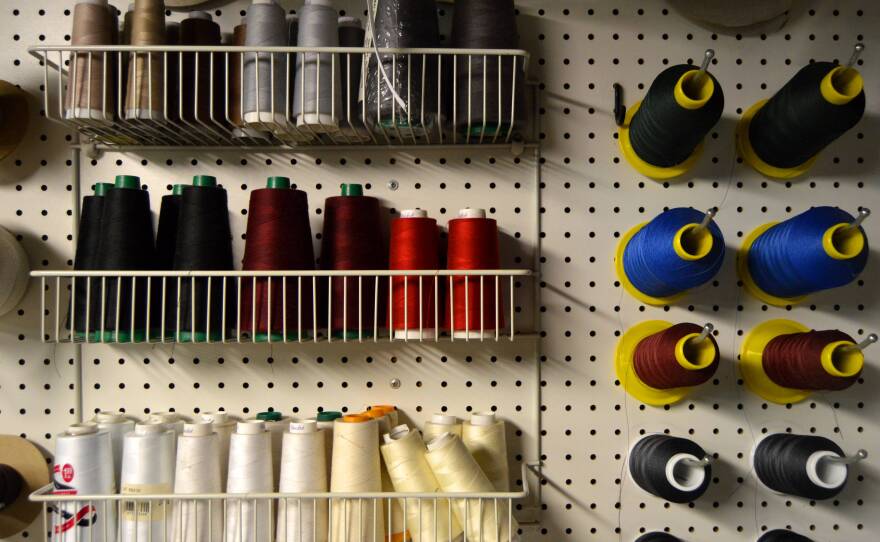We live in a throw-away society. Things are made cheaply and when we’re finished with them, we toss them out. That goes for furniture too. People put couches out on the curb. In college towns such as Ann Arbor, at the end of the academic year, there are lots of couches at the curb.
We used to re-upholster furniture. In fact, some people still do. And in this installment in our series, “Artisans of Michigan” we visit an upholsterer.
In a quiet neighborhood in Ann Arbor, we met Karol Butcher who runs her business, The Great Cover Up, out of her home.
For 20 years, Butcher worked in the corporate world. She was out of work for a short time and started re-covering furniture as a hobby. Then she got another pretty good corporate job, but that’s not where her mind was.

“All I kept thinking about was upholstery,” she said while pulling tacks from on a 19th century sofa sitting on the workbench.
“So, believe it or not, I put in my notice after a few weeks of work. I started doing upholstery for a living,” she said.
The first couple of years were pretty scary. No steady paycheck. No certainty that she could make it financially.
She’s been at it now for 13 years. She says she’s constantly busy with a three-to-five month backlog of work. Most importantly: she loves what she’s doing.
Butcher was told if she loved doing upholstery as a hobby, she shouldn’t turn it into a business because she would end up hating it. She ignored that advice.
She spends a lot of time in her basement workshop surrounded by sewing machines, bolts of fabric, and a lot of hand tools. Most of the work is done by hand.
She says there’s something therapeutic about the work. In fact, she sometimes has something of a Tom Sawyer ‘whitewashing the fence’ thing going on.
“I have friends who are more than willing to come over and do what I’m doing right now (pulling tacks and nails from the furniture frame) just because it’s satisfying,” she said, offering me the hammer and pry tool. “Really, who doesn’t want to hammer things? Who doesn’t want to see the transformation as you work through it,” she asked.
Yeah. No. Not me. I know that trick.

Butcher says The Great Cover Up is working out well enough that she can pick and choose the jobs she wants to do. She’ll refer some customers to other upholsterers in the area. She likes working on antique pieces, not exclusively, but she finds them more challenging.
Which brings us back to that whole throw-away society question: when is it cost-effective to get something re-upholstered?
“I tell people it’s cost effective if you got a really solid frame, something that’s going to last for a while,” she explained. She says it might be a 19th century piece like the one she was working on or something more contemporary, but worth keeping around for another few decades.
It’s not cheap. But, it is custom and it will last.
*This interview was originally broadcast on Aug. 12, 2016.
(Subscribe to the Stateside podcast on iTunes, Google Play, or with this RSS link)










